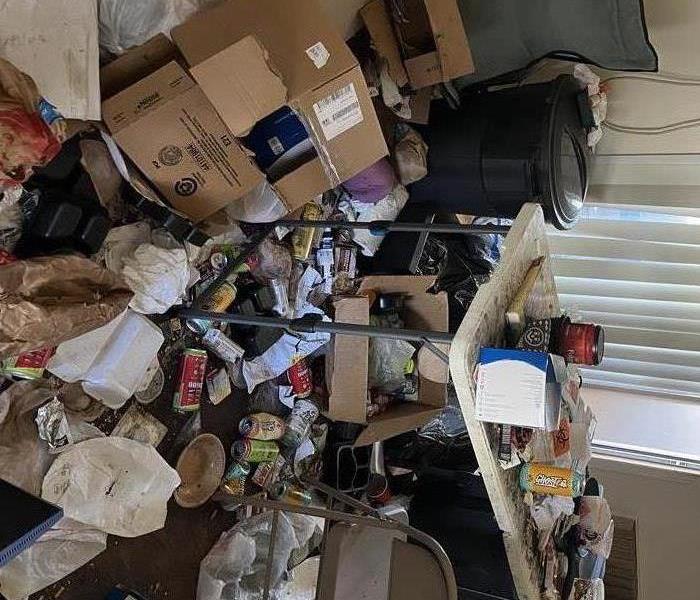Assessing Wind Damage and Its Aftermath
5/15/2024 (Permalink)
 In this blog, we explore how to assess wind damage and navigate the aftermath effectively, providing valuable insights and guidance for homeowners.
In this blog, we explore how to assess wind damage and navigate the aftermath effectively, providing valuable insights and guidance for homeowners.
Strong winds can wreak havoc on homes and buildings, causing significant structural damage. Assessing and addressing wind damage promptly is vital to ensure the safety of occupants and prevent further deterioration. In this blog, we will explore how to assess wind damage and navigate the aftermath effectively, providing valuable insights and guidance for homeowners.
Safety First
Before assessing any damage, prioritize safety. Make sure the immediate danger has passed and it is safe to enter the premises. Watch out for potential hazards such as downed power lines, unstable structures, or debris. If there are any concerns about the stability of the building, evacuate immediately and seek professional assistance.
Exterior Assessment
Begin by conducting an exterior assessment of your property. Look for visible signs of wind damage, including:
- Roof: Check for missing or damaged shingles, loose or dented flashing, or displaced tiles. Pay attention to any areas where the roof might have lifted or peeled back, as these are vulnerable spots for water intrusion.
- Siding and Facade: Inspect the siding, stucco, or brick facade for cracks, chips, or loosened sections. Strong winds can dislodge siding materials, compromising the structure's integrity and leaving it vulnerable to further damage.
- Windows and Doors: Examine windows and doors for cracks, broken glass, or frames that have pulled away from the structure. Damaged windows and doors can compromise security and lead to water damage if not addressed promptly.
- Exterior Structures: Assess other elements such as fences, awnings, and outbuildings for damage. These structures may have experienced wind stress or could have become projectiles during the storm.
Interior Assessment
Once the external assessment is complete and deemed safe, proceed to inspect the interior of the building. Look for the following signs of wind damage:
- Water Intrusion: Check for signs of water damage, including stains, discoloration, or moisture on walls, ceilings, and floors. High winds can cause gaps in the building envelope, allowing water to enter and potentially lead to mold growth and structural decay.
- Cracks and Shifts: Look for new cracks in walls, ceilings, or floors, as well as any noticeable shifts in the structure. Wind pressure can cause structural elements to move, leading to cracks or gaps that compromise stability.
- Damaged Electrical Systems: Assess the electrical system for any visible damage, such as exposed wires, broken outlets, or non-functioning fixtures. If you suspect any electrical damage, seek professional assistance and refrain from attempting to fix it yourself.
Engage Professionals
For a comprehensive assessment of structural wind damage, it is essential to engage professionals. Turn to trained experts who can assess the severity of the damage and provide guidance on necessary repairs.
- Structural Engineers: Consult with a structural engineer to evaluate the extent of the damage and provide a detailed assessment. They can determine if the building is structurally sound and recommend appropriate repairs or reinforcements.
- Restoration Professionals: A professional restoration company like SERVPRO® can provide expertise in addressing water damage, mold remediation, and structural repairs. Their skilled technicians can conduct a thorough evaluation of the damage and execute necessary restoration procedures to ensure your home is safe and habitable.
Remember to document all the damage with photographs and detailed notes, as this information will be valuable for insurance claims and the restoration process. By promptly addressing wind damage and seeking support from trusted professionals like SERVPRO, you can protect your property and restore it to its pre-storm condition.
In Conclusion
Assessing wind damage and its aftermath requires a methodical approach and professional expertise. Prioritize safety, conduct a thorough evaluation of the exterior and interior, and engage reputable professionals for guidance. By promptly addressing structural wind damage and following the recommended repairs, you can ensure the safety and integrity of your home with the help of trusted experts like SERVPRO.






 24/7 Emergency Service
24/7 Emergency Service